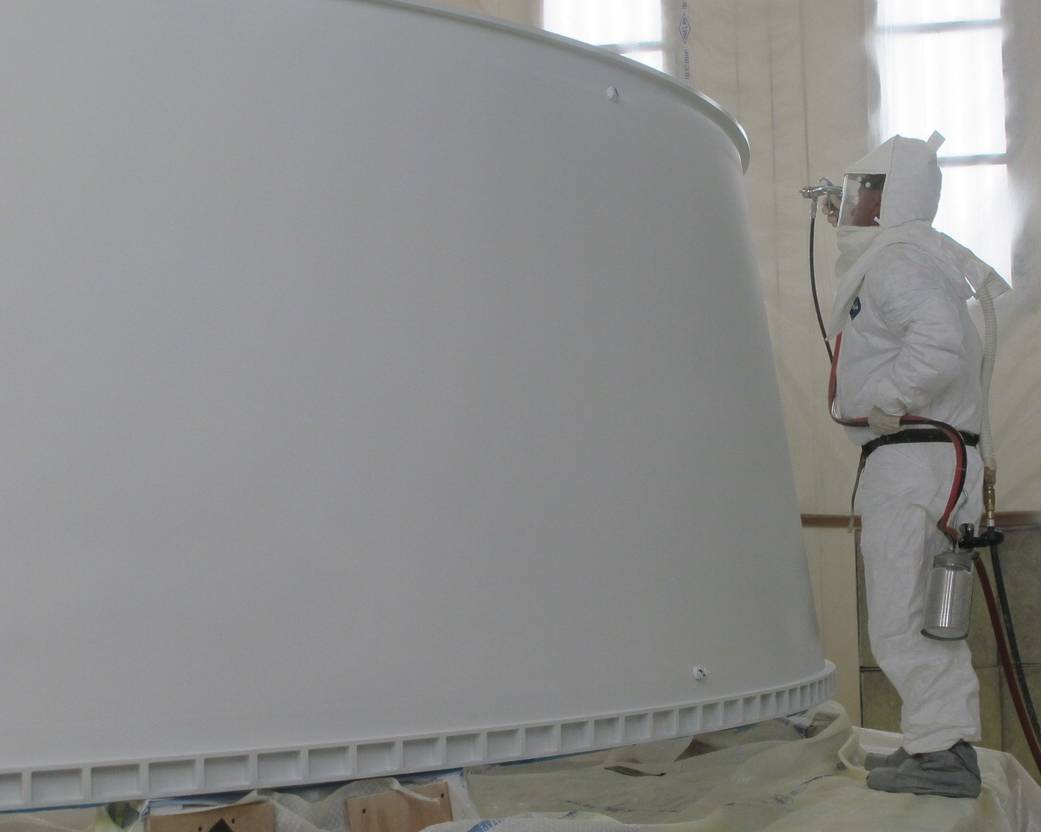A technician at NASA’s Marshall Space Flight Center in Huntsville, Ala., applies the finishing touches on the stage adapter that will connect NASA’s Orion spacecraft to a United Launch Alliance Delta IV rocket for Exploration Flight Test-1 (EFT-1) in September 2014.The top coat for the adapter is a special paint that protects the hardware and its components, like sensors, from electrical discharge on ascent.
During EFT-1, Orion will travel to an altitude of approximately 3,600 miles above Earth’s surface, farther than any spacecraft built for humans has gone in more than 40 years. It will provide engineers with early flight-performance data before Orion is flown on NASA’s new heavy-lift rocket, the Space Launch System (SLS) beginning in 2017. Together, Orion and SLS will allow future explorers to travel farther into our solar system than ever before.
A test article twin of this adapter soon will be attached to the diaphragm — which keeps gases away from the spacecraft — to undergo pressurized testing in mid-November at Marshall. The tests will certify the hardware for flight conditions.
Image credit: NASA/MSFC/Michael Alldredge





























